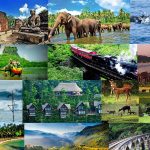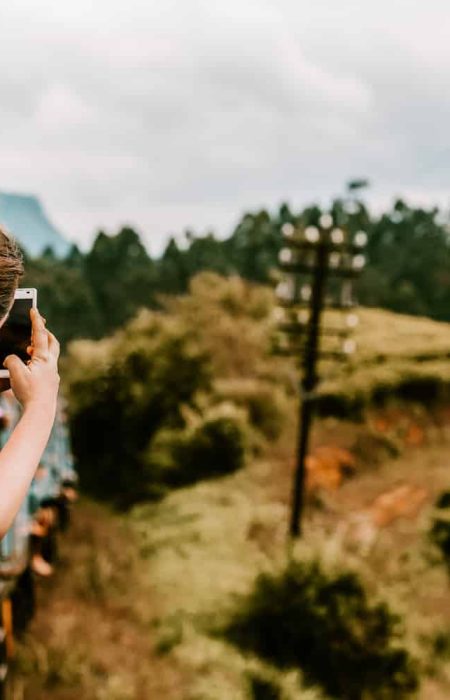The Northern Province of Sri Lanka’s cultural capital, Jaffna, is the home of Tamil culture, history. Located on the northern tip of the island, Jaffna marries colonial heritage with the verdant Tamil tradition on the other hand to become a fascinating study in resilience and cultural richness.
History – Early Beginnings to Colonial Encounters
The legend and record of ancient Lanka are so closely united with the history of Jaffna. It was historically known as the Kingdom of Jaffna, and was a major settlement during the early dynastic periods on Sri Lanka. European colonial powers did arrive and left their marks upon the region, which are seen in the architecture, religion and social fabric in the region, for example, Portuguese, Dutch and British left immense impacts upon the region.
The Sri Lankan Civil War
Most of Jaffna was devastated by the Sri Lankan Civil War that dominated much of the territory in the latter half of the 20th century. Ethnic tensions was the source of conflict which lasted from 1983 to 2009, causing large loss of life and displacement.
Rebuilding and Reconciliation
However post war Jaffna has witnessed some reconstruction involving rebuilding of infrastructure, demining and reconciliation of divided communities. Nevertheless, Jaffna is witnessing a slow revolt from the dead, in its attempt at economic recovery and communal unity.
Geography
Jaffna is flat and arid and dotted with palmyrah palm trees. It is bordered by the shallow waters of the Indian Ocean and has a number of islands, notably Neduntivu (Delft Island).
Culture – Language and Religion
The ethnic Tamil majority is represented by Tamil, being the predominant language. While the main religions are Hinduism and Christianity, the city is a smattering of gorgeous ornate temples and churches.
Festivals and Arts
The Nallur Festival, to name one, draws in thousands of devotees to Jaffna’s cultural calendar. Music, dance, and arts are all traditions that make up a large part of everyday life to help preserve a wealth cultural heritage.
Economy
Jaffna’s economy has traditionally been an agricultural one, and farmers used to grow crops such as grapes, tobacco and the versatile palmyrah palm. The Tamil diaspora also helps the economy of the local area with remittances and investments into local business.
Education and Society
Fundamentally the community revives in education, with the presence of the University of Jaffna and many schools. Land rights and post war recovery remain a social issue where continued efforts towards a sustainable peace and development are made.
Tourism
Loaded with attractions like the Jaffna Fort and the Nallur Kandaswamy temple, but also the Jaffna Public Library, Jaffna’s tourism industry is budding. While the rest of the nation is losing itself in three cuisines, you might be amused to know that the local cuisine is uniquely different and offers you varieties of food items particularly seafood and vegetarian dishes with their own unique north flavours.
Future Outlook
Going forward, Jaffna has ample space for growth in all regards, including in the sectors of technology, education and tourism. Economic disparity and environmental sustainability have both to be addressed for balanced development.
Best places to visit Jaffna, Sri Lanka
Jaffna serves as the cultural heartland of Northern Sri Lanka and when you explore Jaffna you see what seems like a fascinating land of rich history and evergreen traditions. In this guide, we have several best places to visit in Jaffna taking you on deep dive into the unique cultural, historical and natural attractions that swell in this area.
1. Jaffna Fort
The Jaffna Fort is a relic of the regional colonial past, built first by Portuguese in 1618 and expanded by the Dutch. The second largest existing fort in Sri Lanka is it. Its walls, ramparts and bastions speak of battles and the sieges, and it affords panoramic views of the surrounding city and sea. If you are a history nut or architecture lover, a visit here is like traveling back in time.
2. Nallur Kandaswamy Temple
One of the more important Hindu temples in Jaffna, the Nallur Kandaswamy is characterized by golden arches and a very elaborate gopuram (tower). The annual Nallur Festival lasts for 25 days bringing pilgrims from all over the world to its venue. This festival is most magical in the festival because it brings out the temple’s vibrant atmosphere full of rituals, music and Hindu culture.
3. Jaffna Public Library
The Jaffna Public Library is a metaphor for Jaffna’s literary heritage and resilience: a once Asia’s largest library, now in ruins. This library was rebuilt after the civil war of 1981 destroyed the original one and today contains over 80,000 books and manuscripts. White walls and classic columns give this its sanctuary that book lovers and historians crave.
4. Delft Island
Neduntivu or Delft Island can be reached on a ferry from Kurikadduwan Jetty and offers a peek into the largely unchanged, rural lifestyle. The island is known for its wild horses, its coral walls, and for its ancient Baobab tree. Ancient churches and the ruins of a Dutch fort dot the landscape, and it makes for an interesting day trip away from the mainland’s crowd.
5. Kadurugoda Temple
In a part of Sri Lanka dotted with Hindu and Christian temples, Kankesanturai is a rare Buddhist historical gem. Kadurugoda Temple complex surrounded by 20 small stupas is full of mysteries and legends. A peaceful site to contemplate while among the island’s ancient ruins, the site offers insights into the island’s early Buddhist civilization.
6. Keerimalai Natural Springs
Keerimalai Natural Springs, located close to the northern tip of the Island is believed to have therapeutic properties. Hindus regard these springs as a great place of pilgrimage because they are so close to the Naguleswaram Temple, one of the oldest shrines in the area. It has a tranquil setting with its sea views as a place to escape body and spirit.
7. Point Pedro
The northernmost point of Sri Lanka, Point Pedro is a wonderful place for seaside vistas as well as sandy beaches. Along with the Point Pedro Lighthouse, the perfect scenery of the high ocean makes its presence to charm even more. Macao’s vigorous markets sell local crafts and fresh seafood and a glimpse of local life.
8. Casuarina Beach
Called as Casuarina Beach one of the best beaches in the Jaffna Peninsula, is named after the Casuarina Trees which line its shore. It has shallow waters that are perfect for swimming and soft sandy beach are good for taking walks at sunset. You feel secluded on the beach compared to other tourist beaches.
9. Jaffna Market
A must visit for a more immersive experience into their life is the Jaffna Market. It’s filled to the brim with traders and their wares — where you can find fresh produce, spices, handloom fabrics and local handicrafts. For trying Jaffna’s famous mangoes and palmyra based products, the market is a good place.
Conclusion
It is a symbol of cultural identity and resilience and that is Jaffna. A complex history and a rich, vibrant culture make it part of Sri Lanka’s social and cultural tapestry. Jaffna is vital as an ongoing story of recovery and hope to both Sri Lanka and the wider South Asian region and its narrative of a city and people that have rebuilt and now reshape themselves is powerful.













